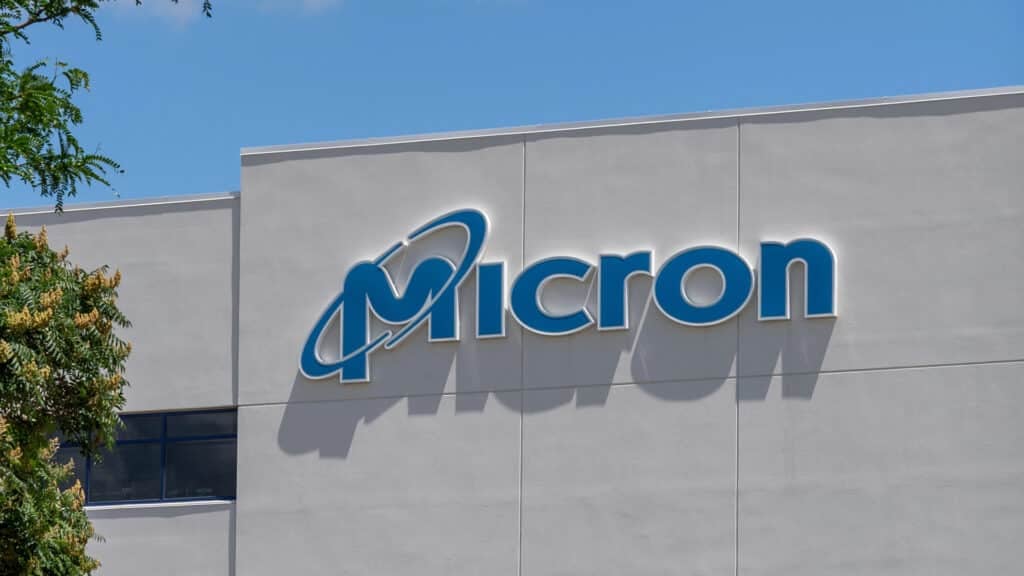In this episode of The 5G Factor, our series that focuses on all things 5G, the IoT, and the ecosystem as a whole, I’m joined by my colleague and fellow analyst, Todd Weiss, for a look at the top 5G developments and what’s going on that caught our eye.
Our discussion centered on:
Major CSP CapEx Snapshot: Spotlight on AT&T, DT/T-Mobile, Verizon, China Mobile, Vodafone, China Telecom. Global CSP capital expenditures (CapEx) for the rest of 2023 and partially into 2024 have more clarity with the major CSPs providing mixed projections that indicate mostly flat CapEx growth. Notably, T-Mobile’s parent, Deutsche Telekom, and Verizon have outlooks that respectively decrease CapEx 24% and 19% from 2022 to 2023 with Verizon cutting more in 2024. We investigate what the implications of the global CSP CapEx situation means for the 5G ecosystem in both the U.S. and other parts of the world.
T-Mobile Champions New 5G Carrier Aggregation Capabilities. T-Mobile is championing its new 5G carrier aggregation capabilities, which allows it to combine multiple 5G channels, or carriers, to deliver greater speed and performance. T-Mobile is now merging four 5G channels of sub-6 GHz spectrum – two channels of 2.5 GHz Ultra Capacity 5G, one channel of 1900 MHz and one channel of 600 MHz spectrum that is akin to combining four separate highways into a top performance superhighway. We assess the benefits customers can gain from the new capabilities, especially for 5G SA environments, as well as the competitive implications for the U.S. market.
Q2 2023 Earnings: AT&T, T-Mobile, and Verizon Put Up Good Numbers. AT&T Q2 2023 revenues came in at $29.9 billion, up 0.9% year over year (YoY), Verizon reported Q2 2023 revenue of $32.6 billion, yielding a non-GAAP profit of $1.10 per share, and T-Mobile generated service revenues of $15.7 billion, up 3% YoY. We examine how each of the big three U.S. operators fared across key subscriber and financial categories and where competitive advantages are generated.
Watch The 5G Factor show here:
Or Listen to the full audio here:
If you’ve not yet subscribed to The 5G Factor, hit the ‘subscribe’ button while you’re there and you won’t miss an episode.
Disclosure: The Futurum Group is a research and advisory firm that engages or has engaged in research, analysis, and advisory services with many technology companies, including those mentioned in this article. The author does not hold any equity positions with any company mentioned in this article.
Analysis and opinions expressed herein are specific to the analyst individually and data and other information that might have been provided for validation, not those of The Futurum Group as a whole.
Transcript:
Ron Westfall: Hello and welcome, everyone, to the 5G Factor. I’m Ron Westfall, research director here at The Futurum Group. And I’m joined here today by my distinguished colleague, Todd Weiss, our team analyst. And today, we’re going to dive into our show called the 5G Factor, which is all about the 5G ecosystem and the IOT and the major developments that have caught our eyes. Todd, great to see you. And welcome to your initial foray here on the 5G Factor. How’s it going? Do you feel excited?
Todd R. Weiss: I am. I’m a little nervous. Thanks so much. You’re helping me through it. I appreciate it.
Ron Westfall: No problem, Todd. It’s just great to have you on and certainly looking forward to our conversation. And with that, let’s dive in. I think a major issue for the global 5G market is operator capital expenditures, how much and in what direction it’s going. In the US, at least that trend is down for the rest of 2023 and potentially into 2024. Now, for example, T-Mobile’s parent company, Deutsche Telekom, is cutting its CapEx from $22.1 billion in 2022 to $16.8 billion in 2023. Now, that’s a dramatic 24% reduction. And so specifically, DT indicated that in the US, they are looking at a strong decrease in CapEx throughout 2023.
Likewise, Verizon is cutting its CapEx from $23.1 billion in 2022 to 18.25 billion to 19.25 billion in 2023. And that’s a sizable 19% decrease. And currently, only 17 billion is projected for 2024. As a result, Verizon’s spending most of the $1.75 billion dollars of the 10 billion that was allocated for C-band CapEx was used in Q1 2023. Clearly, Verizon is part contributing significantly to this downward trend. Now, of the big three US carriers, only AT&T is maintaining near consistent levels with only a slight cut from $24.5 billion in 2022 to $24 billion in 2023. Now, AT&T’s continuing to invest in 5G and fiber over 2023 to pursue long-term growth opportunities. However, to be of note, AT&T is hedging somewhat because of macroeconomic conditions. If they get rockier, could trigger potential dial back in their spending. Now, interestingly, AT&T, T-Mobile, and Verizon all reported decent to good Q2 2023 earnings.
Now, the change in the CapEx picture can benefit the financial picture, the big three. However, for the suppliers to the US big three, the 5G environment has become challenging. We’ve seen players such as Ericsson, Nokia, Crown Castle, even Corning having to adjust their expectations for the rest of 2023. It is a bit of a contrast here, and we’ll cover this later on, is the fact that the big three US carriers actually all reported decent Q2 2023 earnings, whereas for the suppliers, it’s been more challenging. And Todd, from your perspective, what are you seeing in the CapEx picture that is notable? What’s going on, for example, in other parts of the world that caught your eye?
Todd R. Weiss: In Europe, Vodafone has outlined significant changes in its roadmap for the coming years. They’re making a lot of changes. Vodafone, at this point, they’re reallocating investment in FY24 toward customer experience and brand, €150 million and €100 million, respectively. They’re moving money away from hardware to customer relationships, which is a really important thing in the mobile field, I believe. They also have plans to cut a billion euros in costs by 2026, which were announced in November of 2022. Again, they’re moving toward the people aspect rather than the hardware and technology aspect. I think that’s significant for Vodafone to do that.
There’s a zillion users in Europe, and this is actually reflecting what they’re looking for, what they need. I think that’s an important thing. The other thing that I thought was interesting, China Telecom, for instance, they have changes. Their changes this year, CapEx on industrial digitalization, including cloud, AI, big data, digital platforms. They’re increasing those by 40%. While China has a huge number of users, they’re going to be bringing more hardware and more services and software to help their customers, which is probably what the demand is in China, I would say.
Ron Westfall: In fact, I think what is being underlined here is that for the most part, the major operators, the top CapEx sources, are basically looking to cut costs continually. And one way to do that is to shift resources, to put more emphasis on CapEx, but also to streamline their systems to quite simply make them more efficient. And one key way to do that is through automation and also using AI engines. Naturally, I’ll be keeping a close eye on how this is progressing. This is something that I think will benefit customers most importantly, but also I would say the entire 5G ecosystem because it will deliver better experiences and also enable the workforce of the major operators to focus more on developing just that, those valuable experiences, making the billing, for example, more user-friendly. And I think we’re going to see that in some of the results that we’ll address a bit later on.
And so I think these are the key takeaways. Even though the CapEx picture is going down, at least in some parts of the world, we’re still going to see some important spending in some key areas that will keep things very interesting. India, for example, is going to be, I think, a significant source of CapEx over the rest of this year and into 2024 to offset the significant US declines. Now, circling back to T-Mobile, they recently came out with some, I think, headline grabbing news. And Todd, from your perspective, what about T-Mobile is of interest now?
Todd R. Weiss: T-Mobile. Well, when you were just talking about the AI stuff, that is interesting to me. Can you imagine if this transition to AI, generative AI, if those things were in the marketplace a couple of years ago before the T-Mobile acquisition of Sprint? I wonder if that would’ve given Sprint any benefits at all in terms of not having to be acquired. I’m just wondering how big is AI and generative AI going to be for these vendors? Globally, is this going to change the acquisitions globally? Is this going to change competition? Maybe make some of the smaller players more formidable in the marketplaces? I’m wondering what do you think of that? Am I crazy to even think that? Or not?
Ron Westfall: No, I think it’s actually something that not only can we look at it future leaning, but also the what-if scenarios. And I would say that AI has to be looked at in a continuum. Yes, generative AI is generating the headlines and it’s definitely pushing interest in that direction, and particularly for applications like ChatGPT. But AI is also very instrumental in many other parts of the network. And I touched on that in terms of, for example, streamlining operations, making better decision making, and also being able to pinpoint, for example, security breaches in a more rapid fashion, in a more precise fashion. AI definitely is going to be a game changer. And yes, had it been theoretically more available, it could have altered some of the merger acquisition activity that we’ve already seen, but I think it’ll be driving some new ones on the horizon.
Todd R. Weiss: Oh, yeah. Certainly.
Ron Westfall: And so for example, T-Mobile is continuing its innovation push and we’re seeing them championing new 5G carrier aggregation capabilities. Now, those are designed to allow T-Mobile to combine multiple 5G channels or carriers to deliver greater speed and performance. Now T-Mobile is merging four 5G channels of sub-6 gigahertz spectrum, two channels of 2.5 gigahertz ultra capacity 5G, one channel of 1900 megahertz, and one channel of 600 megahertz spectrum. And so in essence, what they’re doing is creating a superhighway for their carrier traffic. And that, I think, is going to make a difference in terms of the performance of their overall network, both in terms of the 5G consumer services that are making a lot of headway, but also in their push for more business customers. In fact, T-mobile for business, I think, is going to make a bigger presence felt throughout the entire market because they are being able to use not only the fact that they have a nationwide 5G network and have a solid claim to being first in terms of deploying that, but also being able to leverage these new 5G carrier aggregation capabilities.
And so now we’ll see T-Mobile basically advancing 5G standalone capabilities, and that’s going to be a big difference maker. The new 5G carrier aggregation capabilities are fully aligned with 5G standalone implementations. And as a result, I think we’re going to see peak speeds at top 3.3 gigabits per second, for example. At least T-Mobile is coming out tests that verify these capabilities. And so as a result, stay tuned. T-Mobile is going to make even more waves with some of these new capabilities in addition to the momentum they’ve already demonstrated.
Todd R. Weiss: I’m curious, are their competitors, AT&T, Verizon, and in Verizon, are they able to do this yet? Or will they be trying to catch up to AT&T in the future?
Ron Westfall: Well, I think that’s a great question. And I think you hit the head on … The note on the head with the catch-up aspect. That is T-Mobile, in terms of its positioning, is being able to demonstrate, okay, they’ve been first to market with a 5G standalone network, also having a nationwide 5G network. And this is being reinforced by the fact that, okay, they’re the first ones coming out with these 5G carry aggregation capabilities. This is a competitive edge, from my perspective, that T-Mobile has and will be able to leverage in terms of differentiation against its big two rivals, let alone any other offerings that are out there. Potentially, for example, the dish network when it becomes commercially available on a broad basis. That’s my perspective there.
Todd R. Weiss: What do you think, how much time do they have ahead of Verizon and AT&T in that area? Could that take these guys a year to catch up or longer or less?
Ron Westfall: Well, that’s a good question. Quite simply, we can only speculate. I think Verizon and AT&T certainly have their eye on upscaling their 5G aggregation capabilities, certainly using up to four channels. Now, in terms of when that will be available, that’s up to them to reveal to the market, so all we could do is speculate. I don’t have a specific insight as to when that will occur, but that’s something that we’ll definitely be keeping a close eye on because it’s going to be important for them to be able to match T-Mobile in both the speed tests as well as aggregation capabilities.
Todd R. Weiss: It will also be important to see how consumers and businesses feel about this. Is this something they jump on, T-Mobile service, because of it? Or is it not a big deal to them? It will be interesting to see how this unfolds in the marketplace if it’s a high demand or not.
Ron Westfall: Well, I think … And for consumers, it’s invisible. As long as their network is performing beautifully, they’ll be happy, or at least very effectively. And for businesses, some might have a interest in the technicalities of it, if they’re implementing, for example, a private 5G implementation. But I would say overall, that the main thing is that these capabilities are just going to make the T-Mobile network all the more better performing in terms of the major metrics that we’re looking at. And I think that’s going to be the difference maker for almost all customers.
Todd R. Weiss: I agree. I think that’s a good point.
Ron Westfall: And in terms of the competition, you mentioned AT&T, Todd, so let’s talk about AT&T and its Q2 2023 earnings. Now, AT&T reported $29.9 billion for its Q2, and that is up 0.9% year over year. And that includes cash from operating activities of $9.9 billion, which is up from 28.2% year over year. And it’s up $1.2 billion in the first half of 2023 compared to the first half of 2022. Now AT&T’s free cash flow of $4.2 billion is up $1 billion in the first half of 2023 compared also, again, to the first half of 2022. And to top it all off, it’s confident that in a full year, free cash flow of $16 billion or better is in the offing. The growth picture looks very promising for AT&T as a result. And why is that? Well, first of all, AT&T delivered 326,000 postpaid phone net ads with continued strong ARPU growth and historically low levels of churn. Plus, its mobility service revenues are up 4.9% and the company achieves its best ever second quarter mobility operating income. And the operating income of $6.4 billion is up 29.3% year over year.
And to top it all off, their full year adjusted EBITDA is a growth of more than 3%. With that, what’s not to like? What is it that AT&T is doing that is also impressing you, Todd, and is keeping your attention on what AT&T has done just in this last quarter?
Todd R. Weiss: My feelings about reading this was that yes, it was not huge growth, but it was not huge loss either. They didn’t lose customers. They gain. Whenever they gain customers, when they ever had … Whenever a company has net ads and service, this is a plus right there, but 326,000 postpaid phone net ads is not a small number. I think that that’s something that would be very pleasing to AT&T, any company.
Ron Westfall: All right on. In fact, not to be outdone, both Verizon and T-Mobile also reported strong Q2 results. And what we see from Verizon, for example, is that they turned in $32.6 billion worth of revenue and including a non-gap profit of $1.10 per share. They too are able to blow their horn. But I would say that the operator that’s being able to blow its horn the most amongst the big three US operators is T-Mobile, once again, as they were able to register breakthrough postpaid account and customer net additions as well as reporting record low postpaid phone churn. While AT&T had progress in this area, quite simply, T-Mobile did even better. And so that is making things, I think, very interesting. And if you look at some of the T-Mobile figures, for example, their postpaid net account additions were 299,000. That again is very impressive. Plus, their postpaid net customer additions were $1.6 million, which is enabling T-Mobile to assert that they’re the best of the industry at this juncture. And also, I think what’s interesting is that their high speed internet customers additions were $509,000. It’s not just about their wireless and mobile additions, it’s also about the fact that their high speed internet customers are beating out AT&T, Verizon, Comcast, and Charter combined. And this is for the fifth consecutive quarter.
Clearly, T-Mobile is putting up great game. And this is yielding results like net income of $2.2 million, and that grew from $2.3 billion year over year. And also, again, their EBITDA of $7.3 billion grew 11% year over year. Basically, T-Mobile is the pacesetter here. They’re really showing that not only are they performing very effectively when it comes to the customer additions, the subscriber additions and so forth, but it’s also yielding these very impressive fiscal results. Looking at the big three, do you have any final thoughts here, Todd, on how you see AT&T, Verizon, and T-Mobile shaping up in the near future?
Todd R. Weiss: I do. I’m particularly impressed with T-Mobile. A number of years ago, I was covering T-Mobile on a regular basis for several years. John Legere was the CEO, a very popular guy. He was very outspoken. He was a character in the IT industry and in the telecom industry. And I thought when he left, I wasn’t sure if T-Mobile was going to have the same play in the market. I wasn’t sure they were going to have the same cachet, but since he did leave, they haven’t lost anything. T-Mobile has grown. T-Mobile has performed. T-Mobile is still making good decisions post John Legere. I’m very impressed by this. He was one of those guys like the Steve Jobs of the telecom industry. He was just a very interesting character. I saw him at these events. And I feel like despite his moving on, this company is still moving on very well.
Ron Westfall: Well, I fully agree. In fact, I take my hat off to the new CEO, Mike Sievert. I think he was very eloquent in how he explained why T-Mobile is successful. And it’s very fundamental. First of all, they have more customers coming to them than any other operator in the US. And secondly, they’re keeping more of these customers.
Todd R. Weiss: It’s a big deal.
Ron Westfall: And third, yep, they’re increasing their bundle effectiveness. So what’s not to like? Kudos to T-Mobile for that continuity. The handoff from John Legere to Mike Sievert has been very successful. You don’t see that all the time.
Todd R. Weiss: And speaking.
Ron Westfall: And so this is something.
Todd R. Weiss: Speaking of bundling, remember how T-Mobile just a few years ago was bundling all kinds of special things for customers in with their T-Mobile service. Verizon has come to do that. You now can get Verizon service with extras, with Paramount Plus, with this, with that. The others have followed what T-Mobile was doing six, seven years ago. I think that’s a really big deal.
Ron Westfall: In fact, it’s kind of a paradox. I think we’re seeing the other players emulate T-Mobile on the consumer side. And T-Mobile, in some ways, is having to emulate Verizon business and AT&T business as they are the large incumbents in that area. However, stay tuned. I think T-Mobile, for example, with their fixed wireless access offerings, making inroads, and will make things more interesting over the next two quarters plus. And hopefully, we’ll see T-Mobile sell…Breaking out their T-Mobile for business revenue streams. And that would be, I think, a validation like, okay, they’re really making headway. They’re really moving the needle in terms of their T-Mobile for business unit. And so this is something to stay tuned for unequivocally.
Todd R. Weiss: Oh, yeah. I agree. And I think that that will be something not too far off in the distance, I believe.
Ron Westfall: All right on. And with that, a high note, let’s say good 5G day to everybody. Thank you so much again, Todd. Thank you for joining our webcast today. It’s been great talking about all things 5G with you.
Todd R. Weiss: Thanks for having me. I appreciate it. I look forward to our next episode.
Ron Westfall: Naturally. You bet. And again, thank you to our audience out there for joining our webcast. And we look forward to seeing you all again, as Todd indicated, on our upcoming 5G Factor webcast. Good day all.
Other insights from The Futurum Group:
T-Mobile Q2 2023: Breakthrough Growth in Customers and Profitability
Author Information
Ron is an experienced, customer-focused research expert and analyst, with over 20 years of experience in the digital and IT transformation markets, working with businesses to drive consistent revenue and sales growth.
He is a recognized authority at tracking the evolution of and identifying the key disruptive trends within the service enablement ecosystem, including a wide range of topics across software and services, infrastructure, 5G communications, Internet of Things (IoT), Artificial Intelligence (AI), analytics, security, cloud computing, revenue management, and regulatory issues.
Prior to his work with The Futurum Group, Ron worked with GlobalData Technology creating syndicated and custom research across a wide variety of technical fields. His work with Current Analysis focused on the broadband and service provider infrastructure markets.
Ron holds a Master of Arts in Public Policy from University of Nevada — Las Vegas and a Bachelor of Arts in political science/government from William and Mary.











